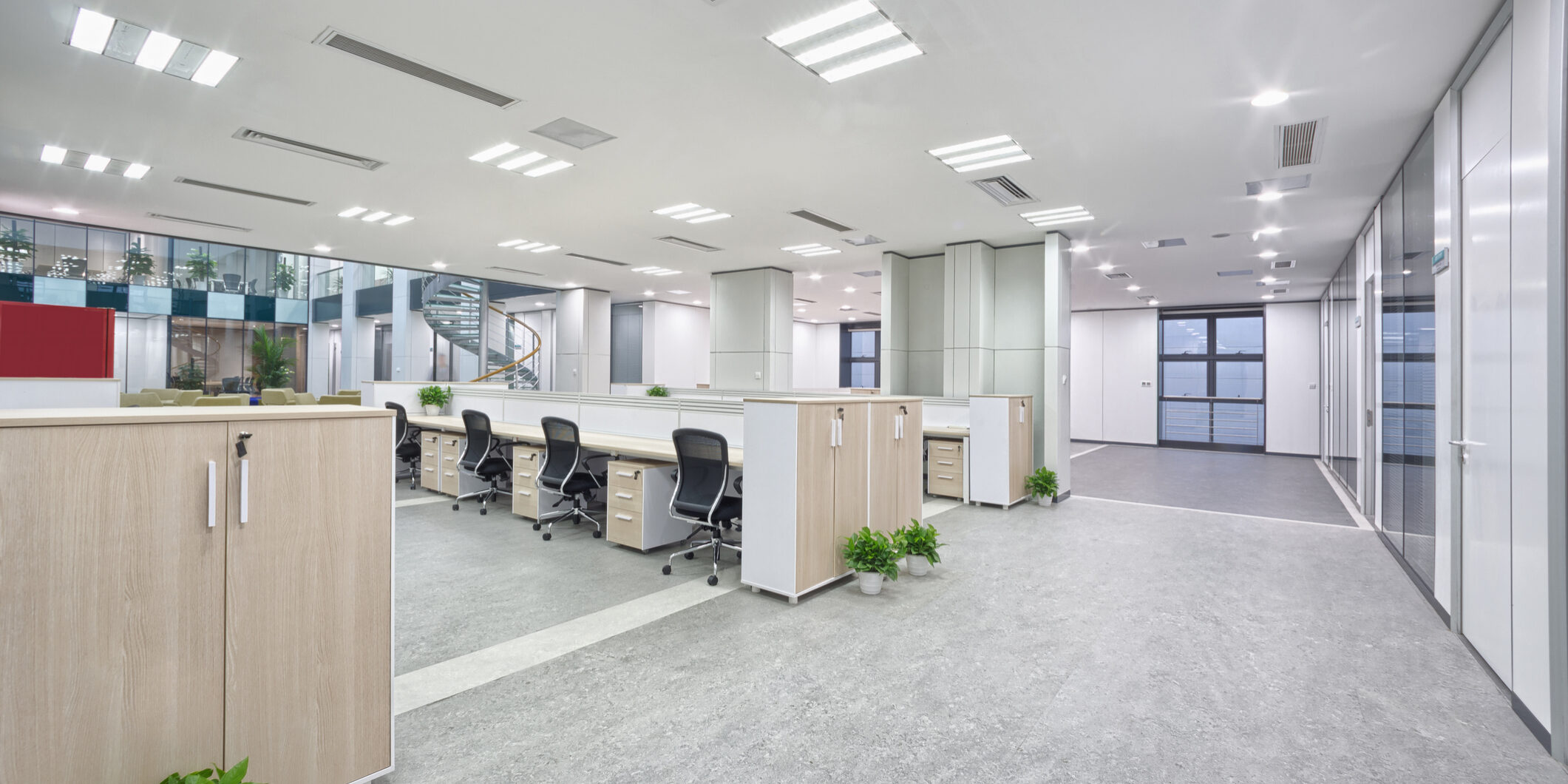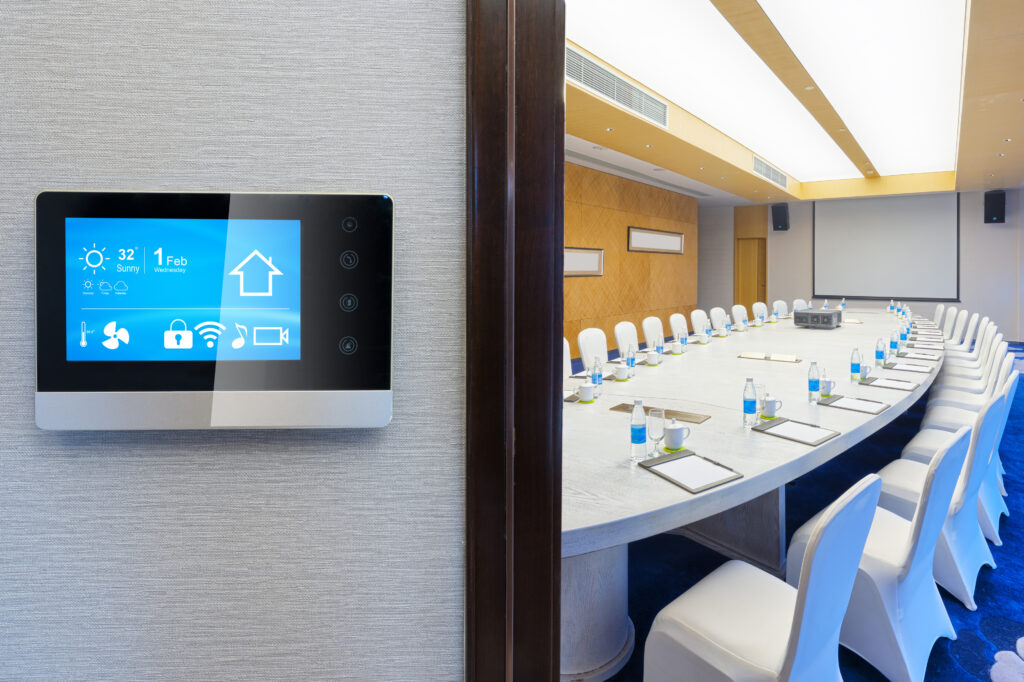Smart Buildings Blog
The latest on all things commercial building automation, energy management, and IoT
What are the Benefits of Utilizing Lighting Controls?

Lighting control refers to the technology and systems used to regulate and manage artificial lighting in various environments. It involves the implementation of devices, controls, and strategies to adjust lighting levels, switch lights on or off, customize lighting scenes, and optimize energy usage. Lighting control systems can range from simple manual switches to advanced automated systems integrated with sensors, timers, and networked controls.
The primary objectives of lighting control are:
- Energy Efficiency: Lighting controls help reduce energy consumption by enabling better control and optimization of lighting usage. By dimming or turning off lights when they are not needed, such as during daylight hours or when spaces are unoccupied, energy waste is minimized, resulting in significant energy savings.
- Cost Savings: Reduced energy consumption translates into lower electricity bills, leading to cost savings for residential, commercial, and industrial users. Lighting controls allow for targeted lighting, ensuring energy is not wasted on unnecessary or excessive lighting.
- Extended Lamp Life: By employing dimming controls, the lifespan of lamps and bulbs can be extended. Lowering the light output reduces heat generation and stress on the lighting equipment, thus reducing maintenance and replacement costs.
- Flexibility and Customization: Lighting controls offer flexibility and customization options, allowing users to adjust lighting levels, color temperature, and lighting scenes to meet specific requirements or create desired atmospheres. This adaptability is particularly beneficial in spaces where different tasks, events, or moods require varying lighting conditions.
- Enhanced User Comfort: With lighting controls, occupants can tailor the lighting to their preferences, optimizing comfort and visual ergonomics. Adjustable lighting levels, color temperature, and dimming capabilities create pleasant and productive environments, reducing eye strain and fatigue.
- Improved Safety and Security: Lighting controls, such as occupancy sensors or timers, enhance safety and security by ensuring that lights are automatically activated when people are present and deactivated when areas are unoccupied. Well-lit spaces deter potential intruders and improve visibility, minimizing accidents and risks.
- Environmental Impact: By reducing energy consumption, lighting controls contribute to a lower carbon footprint and help mitigate environmental impacts. Energy-efficient lighting systems and adequate controls promote sustainability and support environmental goals, including greenhouse gas reduction and resource conservation.
- Compliance with Building Codes and Standards: Many building codes and energy standards now require or encourage the use of lighting controls to meet energy efficiency requirements. Building owners can ensure compliance with regulations and certifications by implementing appropriate lighting control systems, potentially attracting incentives or rebates.

Source: iStock
Typical components of lighting control systems include:
- Manual switches or dimmers: Traditional switches or dimmers that allow manual control of lighting levels
- Sensors: Occupancy sensors, motion sensors, or daylight sensors that detect movement or natural light levels to activate or deactivate lights accordingly
- Timers: Devices or systems that schedule lighting operations based on specific time settings
- Dimming Controls: Devices or systems that adjust the brightness or intensity of lights, often allowing for dynamic control of lighting levels
- Lighting Control Panels: Centralized control panels or interfaces that enable comprehensive management and programming of lighting control systems
- Networked Controls: Systems that use communication protocols and network connectivity to integrate and manage lighting control across multiple zones or buildings
Lighting control systems can be implemented in various settings, including residential buildings, commercial offices, retail spaces, healthcare facilities, educational institutions, and outdoor environments. The complexity and features of a lighting control system depend on the application’s specific requirements, goals, and budget.
Overall, utilizing lighting controls brings many benefits, including energy and cost savings, improved comfort and safety, environmental responsibility, and compliance with regulations. These advantages make lighting controls a valuable investment in various residential, commercial, and industrial settings.
Lighting controls can save additional money on your utility bills and energy costs and FSG Smart Buildings can help find the right controls for your lighting system. Contact us and find out how we can deliver success for your organization today.
Interested in building automation and helping customers build smarter buildings? Come work for us! FSG Smart Buildings is hiring talented people looking for a great career in building automation.
More from the Blog

Electrification as a Sustainability Effort
Electrification as a Sustainability Effort
Electrification refers to transitioning from traditional fossil fuel-based energy sources (such as gasoline, diesel, and natural gas) to electricity as…

Building Automation Systems Are Key to Efficient Facility Management
Building Automation Systems Are Key to Efficient Facility Management
Facility managers responsible for multi-site operations understand how important it is to find ways to reduce energy consumption and minimize…

Helping Make Circle K’s Continuous Lab a Reality
Helping Make Circle K’s Continuous Lab a Reality
Circle K‘s success in the convenience retailing industry spans over 60 years and has developed into a global chain. Facility…
